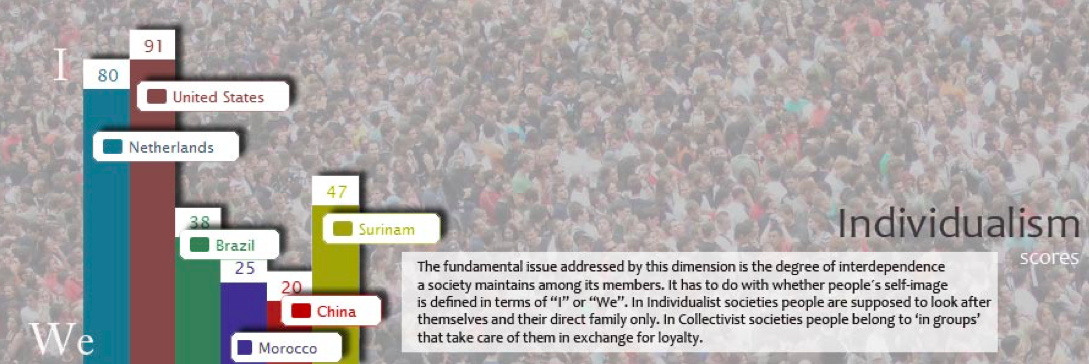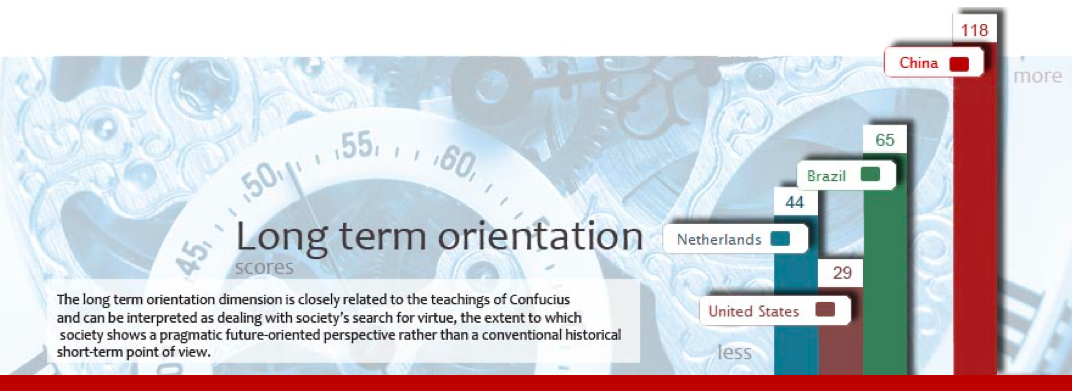Cultural differences play a key role in relationships and in communication. Things often go fine, but for all kinds of reasons that can escape our notice, things can also go very, very wrong. Dutch professor Geert Hofstede spent many years researching the effects of culture in organizations. His study was based on the comparison between a nation’s culture and organizational culture. Hofstede defines Organizational Culture as “the collective programming of the mind that distinguishes the members of one organization from others.” Hofstede’s research has shown that cultural differences between nations manifest at the deepest levels, for example at the level of fundamental values. In comparison, cultural differences between organizations are more typically identified at the level of practices and behaviours. Practices are more tangible than values.
To learn more, enjoy an interview with Geert Hofstede.
Hofstede developed a cool tool for us to use to look at different cultural elements of countries, and you can compare different countries too – National Culture, Countries. This tool might support you in your understanding of cultural differences, organizational values and what elements you ma need to take into consideration when dealing with cultural differences both at work and in your social life. The interesting infographics below show comparisons among 6 countries:
POWER DISTANCE

MASCULINITY VS FEMININITY

INDIVIDUALISM

UNCERTAINTY AVOIDANCE

LONG TERM ORIENTATION

The outcome of his research and many others (for example, Fons Trompenaars and Charles Hampden-Turner in their book called Riding the Wave of Culture) is that each culture is a combination of values, norms, customs, beliefs and preferences. For example, Latinos are often passionate and like sharing their emotions in the open while Germans are often very reserved. In some societies, you are who you are because of your achievements (study, work) while in others, it is more about your background and social status (England versus The Netherlands). Also, the focus on time can be a factor to consider, like in countries where the pace of life is slower (Latin America) compared to the that of the USA, where timeliness is more important.
Based on research conducted in more than seventy countries over a forty-year span, Hofstede examines what drives people apart when cooperation is so clearly in everyone’s interest. Here you can find interesting infographics about how these 6 countries compare to each other on the 5 dimensions.
Pictures come from Filmagen Inner pics Flickr mikebaird James Cridland sookiebontemps


